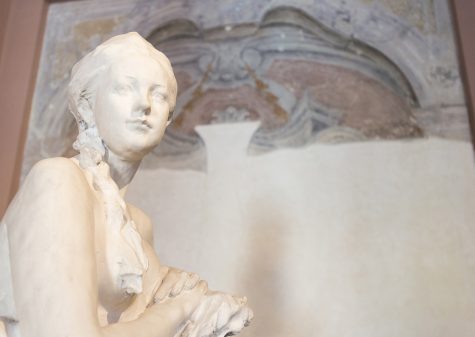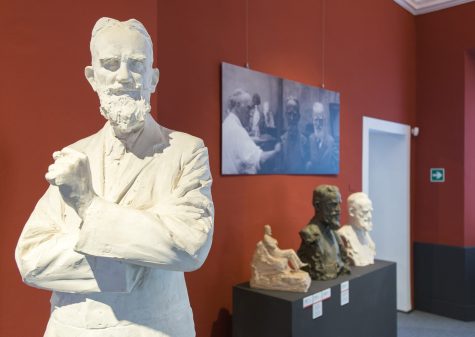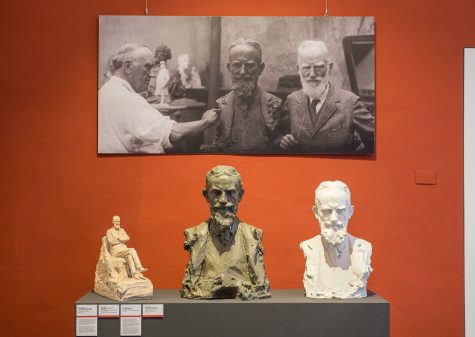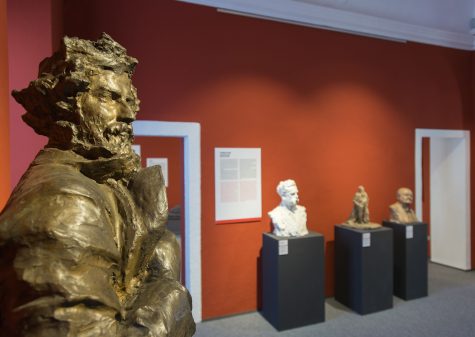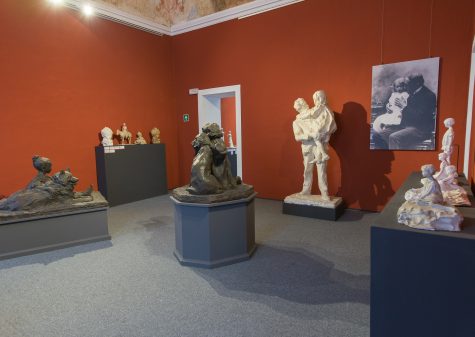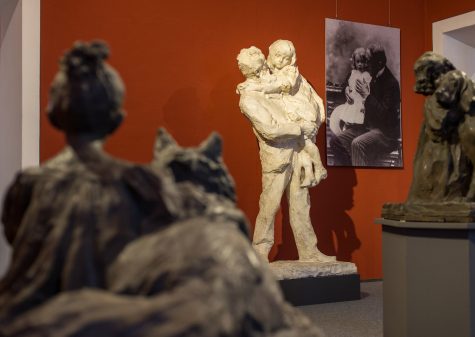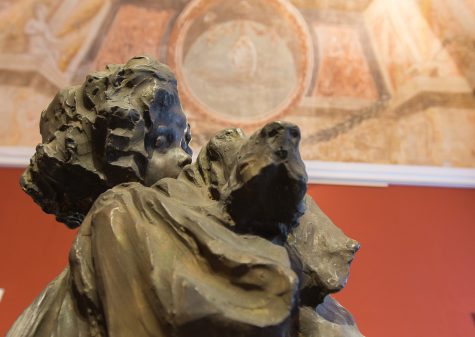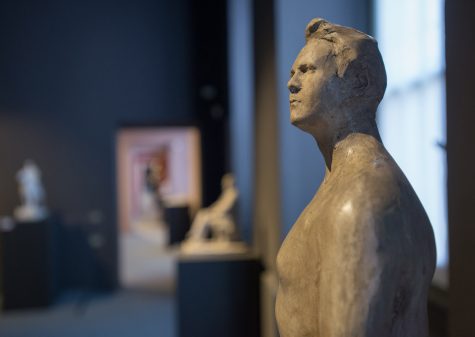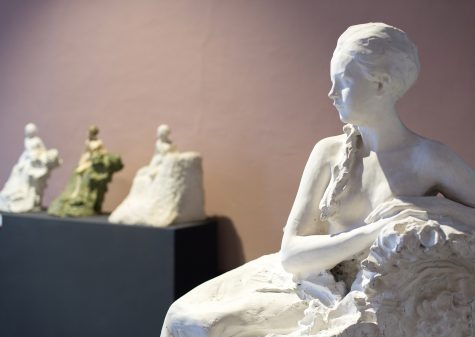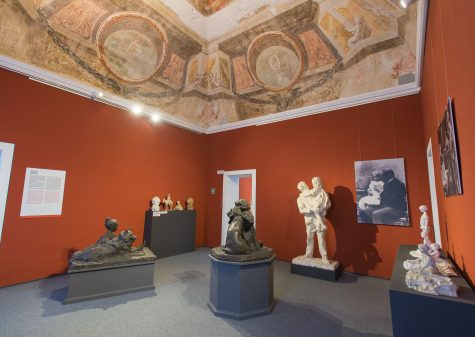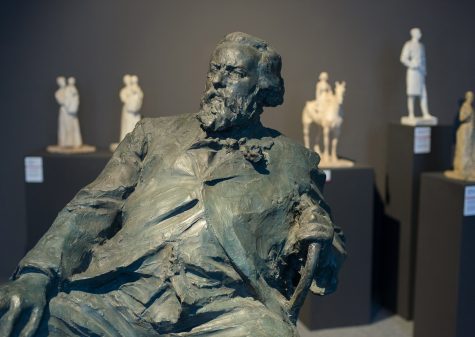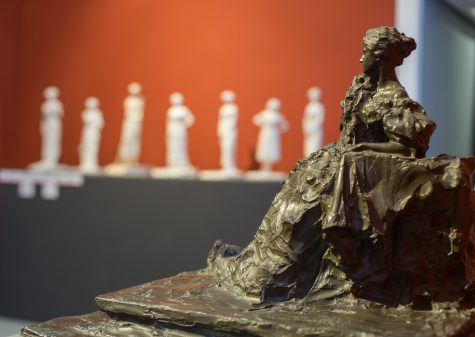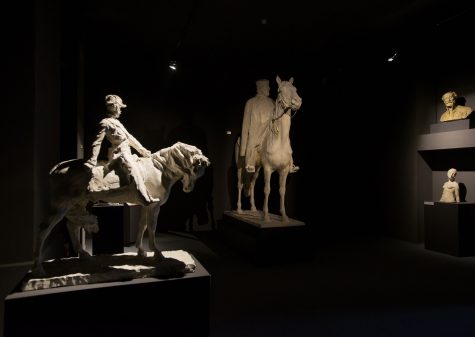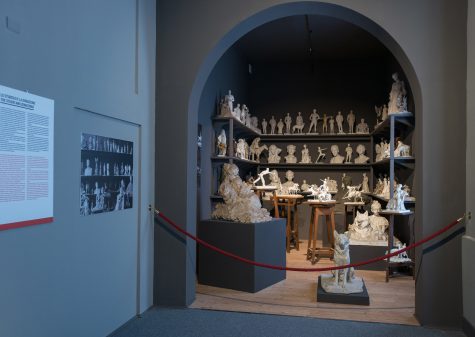Gipsoteca Troubetzkoy
The whole Palazzo Viani’s ground floor has been set up on with the works by Paolo Troubetzkoy. As the artist requested, his heirs donated all his plaster casts to Museo del Paesaggio from his Suna home and his studio in Neuilly sur Seine.
Paolo Troubetzkoy was born in Intra on Lake Maggiore in 1866. He was the second-born of the Russian prince Pietro and the American singer Ada Winans. The next year his family moved nearby Ghiffa, into a villa that frequently hosted eminent guests such as the painters Cremona and Ranzoni, the sculptor Grandi, the musicians Catalani and Junck, and the poet and composer Arrigo Boito. Paolo’s first artworks were in fact inspired by the Impressionism of the Lombard Scapigliata painting school of Ranzoni and Cremona.
In 1884 he moved to Milan for his apprenticeships – first with Donato Barcaglia, then Ernesto Bazzaro – but they lasted only a few months because he liked better studying from life instead of a systematic study.
His first exhibition was in Brera in 1886 with the sculpture “A Horse”, and in the same period, he began sending in portraits to the exhibitions.
In the early 1890s, he took part to many great contests for national celebration monuments – including Garibaldi, Fanti, Dante, Amedeo IV of Savoy – to be erected in a range of Italian towns and some of his works were bought by the Rome Galleria Nazionale d’Arte Moderna and the Golden Gate Museum in San Francisco.
Russian period
In December 1898 Troubetzkoy moved from Milan to Russia where he taught a sculpture course at the Moscow Academy of Fine Art where he invited his pupils to study from life rather than copy the Ancients. Then he frequented the Associazione per le “esposizioni ambulanti”, the Russian painting progressive body which affirmed the principles of realism in art and was open to the influence of French Impressionism. He exhibited in Stockholm where he met Elin Sundström, his future wife.
In 1899 he met Lev Tolstoj in Jasnaja Poljana and made two busts of him, a portrait on horseback, an oil painting, and many sketches. He was struck by the Russian writer’s humanitarianism and vegetarianism and decided to stop eating animal products. In the meantime, he made many portraits of Russian politicians and aristocrats including Prince Lev Galitzin, Princess Gagarina, and the Wladimirovich Grand Dukes.
In 1901 he won a competition to make a monument to Tsar Alexander III for St Petersburg, a work which was unveiled in 1909 after a great deal of controversy and reworkings.
In the meantime, he began exhibiting frequently for the most important Italian exhibitions (Venice, Milan, Rome, Florence) and in Paris.
His Parisian and American period
In 1905, in the wake of the Russo-Japanese war and the first revolutionary outbreaks, Troubetzkoy left Russia to take refuge first in Finland and then in Milan, and at the end in Paris where he was invited to make a monument to Tolstoj. The following year he became a member of the “Société Nouvelle des Peintres et Sculpteurs”, presided by Auguste Rodin, and painted many eminent figures in the French capital. In 1908, at Sargent’s studio in London, he completed his first George Bernard Shaw bust.
From 1911 Paolo Troubetzkoy’s work was exhibited in some solo exhibitions in various American cities including Buffalo, Chicago, St. Louis and Boston. In 1914 he went to New York for a new exhibition and he decided not to return to Europe because of World War One. In 1919 he won a competition to build a monument to General Harrison Gray Otis in Los Angeles which was unveiled the following year.
In his large Hollywood studio, he met and sculpted many film actors such as Mary Pickford and Douglas Fairbanks senior, alternating portraiture with vegetarian subjects or American folklore such as cowboys, rodeo, and Red Indians.
Last period
In 1921 Paolo Troubetzkoy returned to Paris where he rented a villa with a studio in the Neuilly Sur Seine suburb while during summer he stayed at Ca’ Bianca in Suna on Lake Maggiore.
In 1923 Pallanza town commissioned him a monument to the fallen. In 1934 he traveled to Egypt to exhibit in Alexandria and Cairo.
He continued working into old age despite a severe form of anemia which leads to his death in 1938, despite that he never gave up his vegetarian principles.
Paolo Troubetzkoy was frequently described as an Impressionist sculptor by contemporary critics: he broke down the forms of his work to obtain effects similar to those of the Scapigliati painters on canvas, namely an interweaving between subject and the atmosphere around it. In Russia his work was more vigorous and realistic whilst in Paris he moved closer to the sophisticated and elegant portraits of Boldini and Sargent as a result of the influence of the aesthetes.
Troubetzkoy Archive Project. Online General Catalogue of Troubetzkoy’s sculptures.
The Catalogue, developed by the UK-based Company FSG Future Science Group owned by James Drake in collaboration with the Museo del Paesaggio, is constantly evolving to establish an authoritative online central database of the complete work of Prince Paul Troubetzkoy (1866-1938)
The General Catalogue was initiated by the FSG Company with the contribution of its Chairman James Drake, and is available at the link



